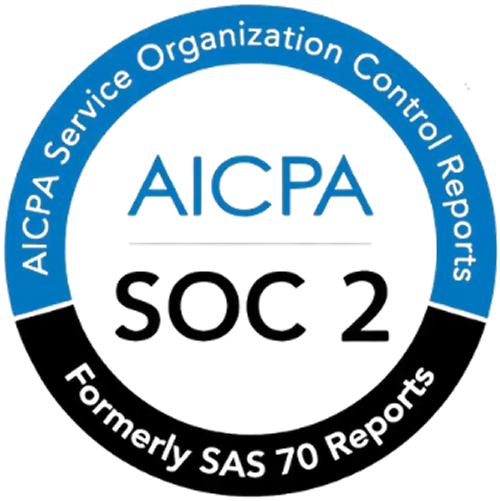It doesn’t matter what your role is – each role in business requires good writing skills.
Whether you’re writing reports, presentations, blog posts, ebooks, full-blown print, or telling your brand story, strong writing skills are critical for success throughout every aspect of your work.
I sat down with Dan Pink, author of several bestselling books on business, work, and behavior, to discuss strategies on how to improve business writing at every stage of the content writing process.
For Dan, there are two key reasons writing is an important business skill:
- Present ideas to persuade people
- Help you think through your ideas
Let’s take a deeper look at these concepts:
“Writing is an important business skill for at least two reasons. The first is that in any kind of business you have to say what you think. You have to convince people. You have to persuade people. The second thing, which is, I think, even more important, is that writing is a form of thinking. That when we write things we often figure out what it is we really think.
Those two things together, making your brain work overtime to figure out what you really think and then conveying your ideas crisply and clearly is essential. That is if you don’t have the skill you’ll be in a world of hurt.”
This goal of utilizing a strong ability to say what we mean to say while communicating effectively to those we work with requires a look into how writing works. Writing is a process that involves a few distinct steps: prewriting, writing, and editing.
- The PREWRITING stage is anything you do before you write a draft, from coming up with ideas, to outlining, to researching
- The WRITING stage is of course the actual drafting of your document, whether it’s a report, a blog post, an ebook, or something else
- The EDITING stage happens once you’ve completed your rough draft, and it involves you self-editing as well as others editing your work
Dan Pink delves further into these three steps in HubSpot Academy’s free Business Writing Course, in which he features as a professor.
As you plan out your writing process, it’s important to remember that the process is not always linear. Don’t be discouraged. Embrace the messiness and unpredictability. This is where looking at writing as a process rather than an end result will prove helpful every time.
At the end of the day, your writing will help you get the results you’re looking for in each aspect of your professional career.
Developing Ideas for Effective Content
There’s a rumor out there that the best ideas come when you least expect them – in the shower; while you’re driving; when you’re just about to fall asleep. Sure, that can work sometimes – but don’t count on it. Ideas, like most things in life, usually don’t just “come to you.” You have to put in the hard work.
But what does hard work in writing look like?
To start, Dan Pink recommends a 3-tiered framework for idea generation that looks like this:
- Collecting all your ideas as they come to you, so you have them when you need them;
- Revisiting these ideas and pinpointing the best ones;
- Teasing out the ideas that stand the test of time
Consistently coming up with great content ideas is one of the toughest challenges in business writing. The prewriting process doesn’t start AFTER you’ve come up with a great idea – coming up with ideas and choosing the right one is a critical piece of the prewriting process.
By setting aside some time to create a thorough, strategic ideation process now, you ensure future ideas will not be looked over/missed opportunities.
Let’s look at this process through Dan Pink’s tried and true idea generation process.
“I collect a lot of stuff and I keep idea files. Wow, these ideas are very rarely fully formed. It’s not like, ‘Oh. I’m going to write a book about the science of timing and it’s going to have seven chapters and this is going to be this chapter.’ Not at all. It would be something more like, ‘What about timing?’ maybe scribbled on a piece of paper that I throw into a paper file.
So, the collection is the first step.”
Dan Pink reaffirms the necessity of embracing the messiness and unpredictability in the writing process. Ideas don’t always come out fully formed. It takes time and, once again, hard work. Dan Pink continues his ideation process by returning to those loose ideas. He recommends periodically taking stock of your ideas to see which have stood the test of time.
“You have to have that yearning to collect but then also the discipline to revisit and filter…
There is a huge difference in something you want to write an article about and something you want to write a book about.”
Dan Pink’s advice prompts the writer to find their ideas and then filter those ideas. Take into account how relevant the topic is to your work or how much time you would want to devote to a particular subject.
Let’s talk more about that second step for a second: going through and identifying the best ideas.
How to “vet” your ideas
These days, we’re constantly bombarded with content. This makes the ability to identify the value in a particular idea or thought essential. Think of this as vetting your ideas.
“There are different points of view on how you vet ideas. Some people say, ‘I do it all by myself, it’s a totally solitary process.’ Other people say, ‘It’s a completely social process. I have to talk to gazillions of people.’ I think what’s really important is, you find the right spot in the spectrum for you.”
When collaborating with others, there are some tells that can help you gauge how they are receiving your writing. Body language, such as leaning backwards upon not feeling the idea or leaning forward when engaged in the conversation, can say a lot about what you’ve got in the works.
Does the idea spark other ideas in your co-worker or family member? According to Dan Pink, having this kind of conversation can help you decide whether your idea has weight and relevance or if it should be updated or discarded.
Collaboration is a hugely important part of the ideation process.
You shouldn’t be the only one vetting your own ideas. Make sure you’re going out there and testing them and talking them through with your audience, your colleagues, or your peers.
By working through, vetting, and developing ideas with others, you’ll be able to take advantage of shared knowledge and diverse perspectives.
Whether it’s a full-length book or a 1,000-word blog post, apply these idea generation strategies to any type of business writing. Collect your ideas in one place, review them and identify the best ones, ideally with others, and if you have time, see which ones hold up under pressure.
The Research Process: Where Ideas Take Shape
It doesn’t matter how well versed you are in a topic: the scope of any piece of writing should always go beyond your own personal experience – and that’s where research comes in.
Research is an important step in the prewriting process because it helps you test the validity and reliability of your ideas, and then communicate them to others in a persuasive way.
It helps to be heard in all the noise.
“Research is extraordinarily important. In some ways, it’s more important in a world where anybody can spout off their opinion.”
Content that is well researched and uses high-quality sources stands out.
Research certainly makes your content more valuable for your audience. And for you as the writer, researching your topic also helps guide your narrative and understand what’s important. I love the way Dan Pink puts it: It’s all about FINDING CLUES. Let’s hear more about that from him.
“I take research very seriously. You need some amount of research in the development of the idea itself…At a certain level one aspect of research is figuring out what are the right things to start finding out. There’s that early part of research. Beyond that, to me, the essence of research is it’s essentially following clues.”
Dan makes a great point here: In the prewriting phase, it’s better to do some research before you begin your outline. We’re taught in school to outline first, and then fill in that outline with research. But what you find during the research process can significantly impact the direction of your narrative.
In other words, you don’t necessarily have to have a plan during the research phase. It’s actually better to stay flexible and let yourself learn and grow during the research process, instead of trying to fit your research into the assumptions you’ve already made.
Remember: quality always beats quantity when it comes to research.
If you’re concerned about how much time it takes to research, then rest assured that if you take the time to research well and make sure your sources are accurate and reliable, then you won’t have to spend a ton of time digging around.
Research Tools and Building Credibility
Let’s talk about a few tools out there to help you do your research and find high-quality sources.
“Google Scholar is essentially Google for academic papers. Now, it’s not perfect, but instead of going to the main Google, where you get everything, you know, car ads and baby formula ads and you get a much more narrow database of academic research and that can often be a very good starting point.”
Another aspect of research Dan recommends is directly contacting experts. Don’t be afraid to reach out cold to experts as part of your research. Reaching out to and building connections with subject-matter experts can be really valuable.
When you do reach out, keep your initial email or message brief and professional, identify yourself and what you’re trying to learn, and ask specific questions.
It’s also important to make sure you’re offering them value in return for their time and expertise. For example, tell them you’ll link back to their source when referring to it in your content. If they respond to you, don’t be afraid to engage them, ask for clarifications if needed, and of course thank them for their time.
Experts can be great, credible sources.
This takes us to the next point: credibility. How do you know that a source is credible? What steps can you take to ensure your credibility?
“Credibility is one of those things, it’s easy to destroy and very difficult to rehabilitate, and that’s why I think you need to pay such careful attention to getting things right.”
Dan Pink offers some advice. Look to other experts in a particular field to vet the credibility of the expert you are contacting or whose sources you are using. It always helps to give a source context by looking to others in their field. Also, when interviewing, use your intuition to wade through the muck. If the subject doesn’t feel credible, chances are they might not be.
Most importantly, great research is what will help your writing stand out. You know you’re done with the research phase and ready to move on to outlining when you feel like the research you’ve collected has helped you develop a really strong idea of the points you want to make and the evidence you want to use to make them. By providing more value to your audience, your authority and relevance can grow.
The Outline: Making Sense of Everything
Once you’ve pieced together the clues with your research, it’s time to create an outline.
An outline helps you categorize your main points, organize your sections into an order that makes sense and flows well, and makes sure that each section and idea can be fully developed. Outlining helps prevent you from getting stuck when you actually sit down to write your first draft, and it helps you identify gaps where you may need to do some more research.
“I think you need some kind of an outline in order to get started. You need some kind of map to know where you’re going.”
What your outline actually looks like will vary heavily not just from project to project, but also from person to person. Some people prefer to jot down the major points only and leave room to develop these points later. Others like to use outlining as an opportunity to start fleshing out their ideas with full sentences and specific wording.
How detailed your outline will be depends on which style you prefer.
Looking at your outline as your map, let the research guide you. Breaking up your research into related sections and then outlining based on that allows you to do this.
This process, once again, may seem a little messy at first but will be well worth it.
“For me, again, when we go back to the way that we’re taught in school, we’re taught this is a very linear process: You do your research. Then you do the writing. Then you do the editing…. It’s much more porous than that. You need a certain amount of research to get started so you have some heft to what you’re saying, but in the process of writing you will discover things, and one of the things you’ll discover are holes. Stuff you didn’t know that was missing. And that will send you back to do some more research…”
As we can see from Dan Pink, it’s a give and take process. However, letting the outline organize your research based on relevance will make it so you do not get too stuck on one idea.
“The main lesson that I would say to aspiring writers or people who are starting out is forget about what you learned in school about this, these very fine borders between the research and writing.”
This blog is a guest post by Justin Champion from HubSpot Academy.
Author Bio
 |
Justin Champion is a part-time digital nomad, author of Inbound Content and Principal Content Professor for HubSpot Academy. Justin created HubSpot Academy’s Content Marketing Course, which has awarded over 100,000 certifications to professionals across the globe. You can find him on Twitter @JustinRChampion and on LinkedIn. |














.png)
